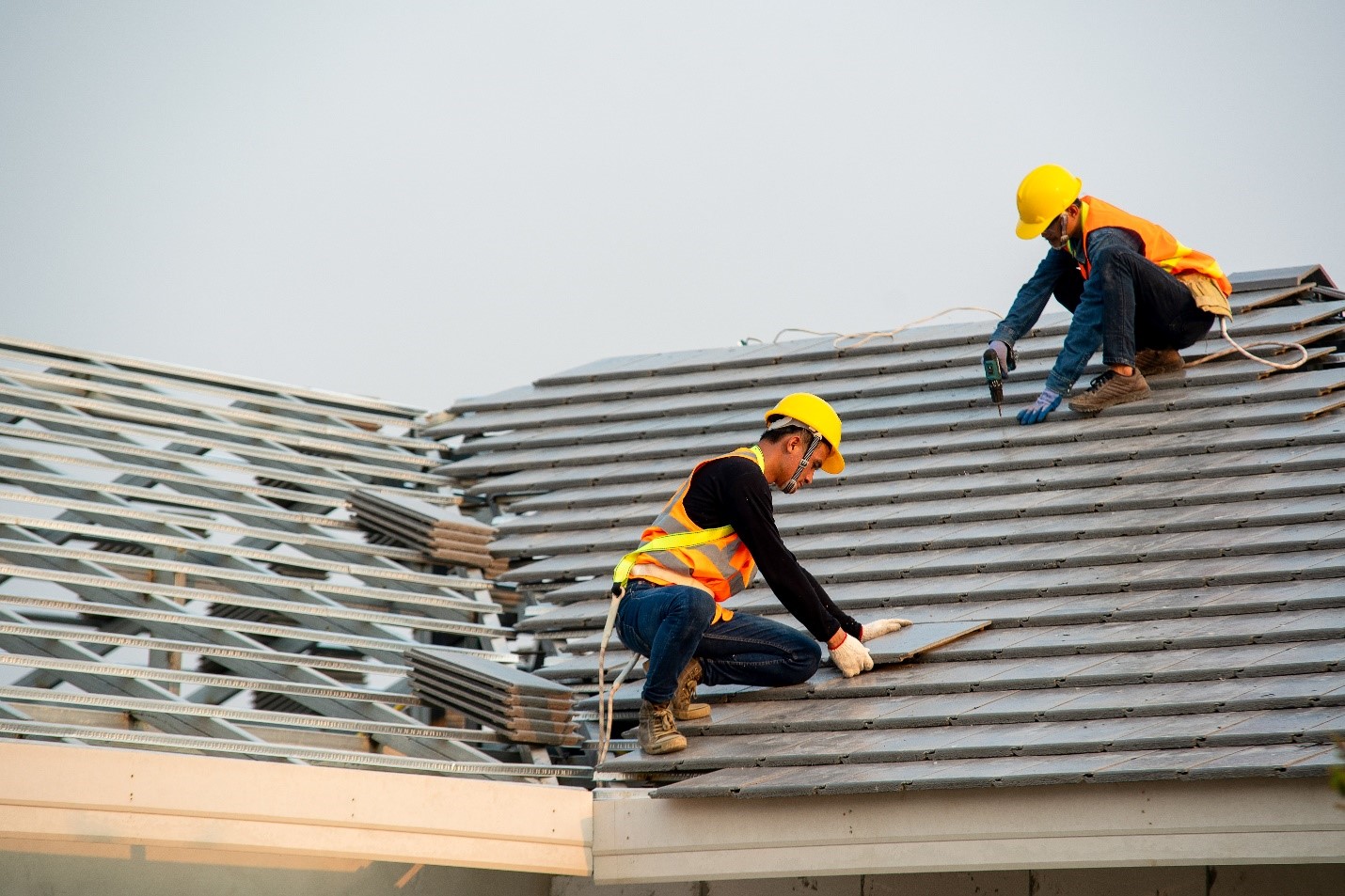In the dynamic landscape of commerce, the significance of robust commercial roofing persistently stands out. The optimal roofing system is a frequently underrated asset of any commercial infrastructure, contributing to structural stability, elemental protection, and even energy savings.
This guide will explore the leading choices in commercial roofing systems with the intention of assisting you in reaching an informed decision.
Types of Commercial Roofs
The sphere of commercial roofing is diverse, with each type presenting unique advantages tailored to a variety of business requirements. Some of the most preferred types encompass:
Built-Up Roofing (BUR): BUR, a time-proven option, is composed of alternating strata of bitumen (asphalt or coal tar) and reinforcing fabrics, forming a finished membrane. It’s recognized for its superior waterproofing capabilities and resistance to foot traffic.
Thermoplastic Polyolefin (TPO): Being a single-ply roofing system, TPO is often selected for its eco-friendly attributes and energy-saving capacities. TPO’s heat-reflective and energy-conserving characteristics render it a favored option for businesses aiming to decrease their environmental impact.
Polyvinyl Chloride (PVC): PVC roofing, a single-ply solution, excels in longevity and possesses resistance to moisture, fire, wind, and chemical damage. It has particular benefits for establishments such as restaurants that emit oils or fats via their ventilation systems due to PVC’s resilience against these substances.
Ethylene Propylene Diene Monomer (EPDM): This durable synthetic rubber roofing membrane is known for its durability and adaptability, and it also boasts relatively easy installation, repair, and maintenance.
Modified Bitumen: A relative of BUR, modified bitumen amalgamates BUR’s robustness with the simplicity of a single-ply system installation. It’s frequently employed on flat or low-slope roofs.
Metal Roofing: With an impressive range of metal materials available, such as steel, aluminum, copper, and zinc, metal roofing caters to a variety of budgets and aesthetic tastes.
The selection of your commercial roof will largely be dictated by considerations like your building’s architectural design, the prevailing climate, and financial constraints.
Materials Employed in Commercial Roofing
The materials used play a significant role in the performance, durability, and overall cost of your commercial roof.
Traditional materials like asphalt, tar, and gravel are widely used for their robustness. Asphalt roofs, with proper maintenance, can last up to two decades, making them a pragmatic choice for many business owners. Meanwhile, tar and gravel roofs offer a cost-effective and reliable solution, particularly for flat roofs where water pooling can be problematic.
Modern materials such as thermoplastic (TPO and PVC), rubber (EPDM), and metal are becoming increasingly popular. Thermoplastic roofs exhibit superior energy efficiency, reflecting sunlight and thereby reducing energy expenses. Rubber roofs, especially EPDM, are renowned for their resilience and can last up to 30 years or more.
Metal roofing, while initially more costly, provides superior durability and a lifespan exceeding 50 years with proper maintenance. Furthermore, metal roofs are recyclable and come in a wide range of aesthetic options.
Commercial Roofing Contractors
Choosing the correct roofing contractor is a fundamental part of your commercial roofing project. The proficiency of your contractor can significantly influence the longevity of your roof and the frequency of costly repairs. Quality craftsmanship guarantees the roofing system’s effective installation and ongoing maintenance, reducing potential problems down the line.
One reliable provider, Ohm Restoration provides Springfield commercial roofing, and they have been setting an industry standard. Known for their dedication to excellence, they offer superior customer service from the initial consultation through to post-installation maintenance. Their team of experienced professionals applies their expertise to every project, providing customized solutions that align with your business needs and budget.
Maintenance and Inspection
Regular inspection and maintenance are paramount for commercial roofing. Much like a high-end vehicle requires regular oil changes, routine roofing check-ups are essential for maintaining the integrity of your roof. Regular inspections can identify minor issues before they evolve into major, costly repairs.
Many roofing professionals advocate for a bi-annual inspection schedule, ideally during spring and fall. This allows for early detection of any winter-incurred damage or potential winter-related problems. Regular maintenance, such as gutter cleaning and debris removal, can further help extend the life of your roof and keep it in optimal condition.
Sustainability and Energy Efficiency
As corporate culture increasingly prioritizes sustainability, energy-efficient and eco-friendly roofing options have gained prominence. Thermoplastic Polyolefin (TPO) and Ethylene Propylene Diene Monomer (EPDM) are notable examples of materials recognized for their energy efficiency and low environmental impact.
These environmentally conscious roofing options not only reduce energy consumption by reflecting sunlight and heat away from the building, thus reducing cooling costs, but they also contribute to reducing your company’s carbon footprint. Choosing these sustainable roofing systems demonstrates a commitment to environmental responsibility, which can positively impact your company’s public image.
Commercial Roofing Innovations and Trends
Innovation is no stranger to the commercial roofing industry. The rise of new technologies and the increasing demand for eco-friendly and energy-efficient solutions continue to propel new trends in the sector.
Cool roofs, designed with highly reflective surfaces to significantly reduce building temperatures, and green roofs, which feature vegetation over a waterproof membrane, are two examples of such trends. Green roofs offer excellent insulation, help manage stormwater runoff, and enhance urban biodiversity.
Another innovative trend is solar roofing, where solar panels are integrated into the roofing system. These roofs not only protect your property from the elements but also generate renewable energy, reducing grid reliance and energy costs.
Conclusion
The selection of an appropriate commercial roofing system necessitates a multifaceted assessment of diverse elements such as the available roof types, the materials utilized, associated costs, regional guidelines, considerations of sustainability, and warranty details.
Accumulating a comprehensive understanding of these factors enables you to make a discerning decision that caters to your immediate necessities and is congruent with your long-term business strategies and financial planning. It is imperative to view the appropriate commercial roof not merely as a fiscal outlay but as a significant capital investment for your enterprise’s longevity.

